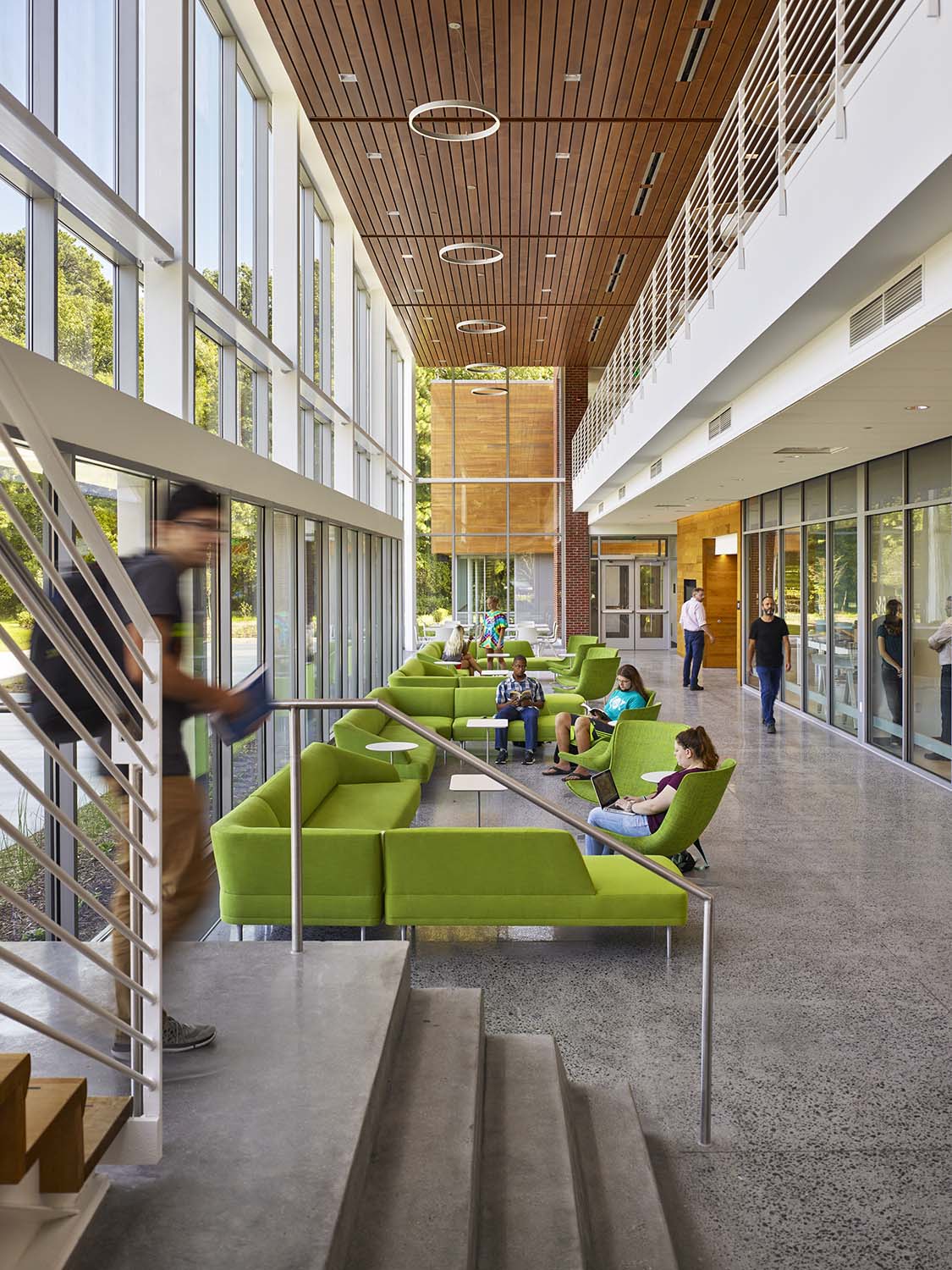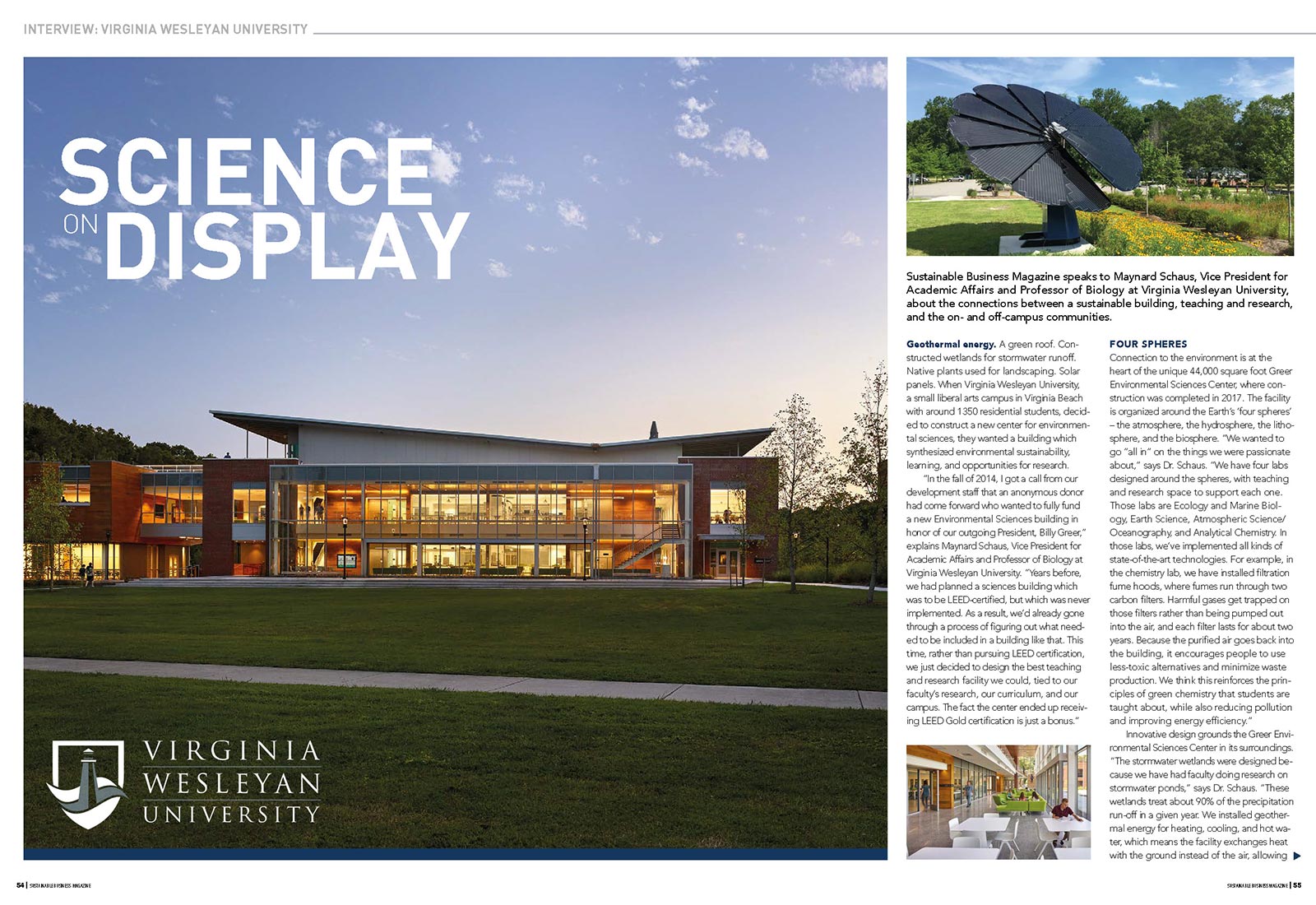This article, originally published by Sustainable Business Magazine, takes a deeper look into VMDO's Greer Environmental Sciences Center as an integral part of the university's plan for engaging students in sustainability goals and environmental issues.
Science on Display: Virginia Wesleyan University's Greer Environmental Sciences Center
Geothermal energy. A green roof. Constructed wetlands for stormwater runoff. Native plants used for landscaping. Solar panels. When Virginia Wesleyan University, a small liberal arts campus in Virginia Beach with around 1350 residential students, decided to construct a new center for environmental sciences, they wanted a building which synthesized environmental sustainability, learning, and opportunities for research.
“In the fall of 2014, I got a call from our development staff that an anonymous donor had come forward who wanted to fully fund a new Environmental Sciences building in honor of our outgoing President, Billy Greer,” explains Maynard Schaus, Vice President for Academic Affairs and Professor of Biology at Virginia Wesleyan University. “Years before, we had planned a sciences building which was to be LEED-certified, but which was never implemented. As a result, we’d already gone through a process of figuring out what needed to be included in a building like that. This time, rather than pursuing LEED certification, we just decided to design the best teaching and research facility we could, tied to our faculty’s research, our curriculum, and our campus. The fact the center ended up receiving LEED Gold certification is just a bonus.”
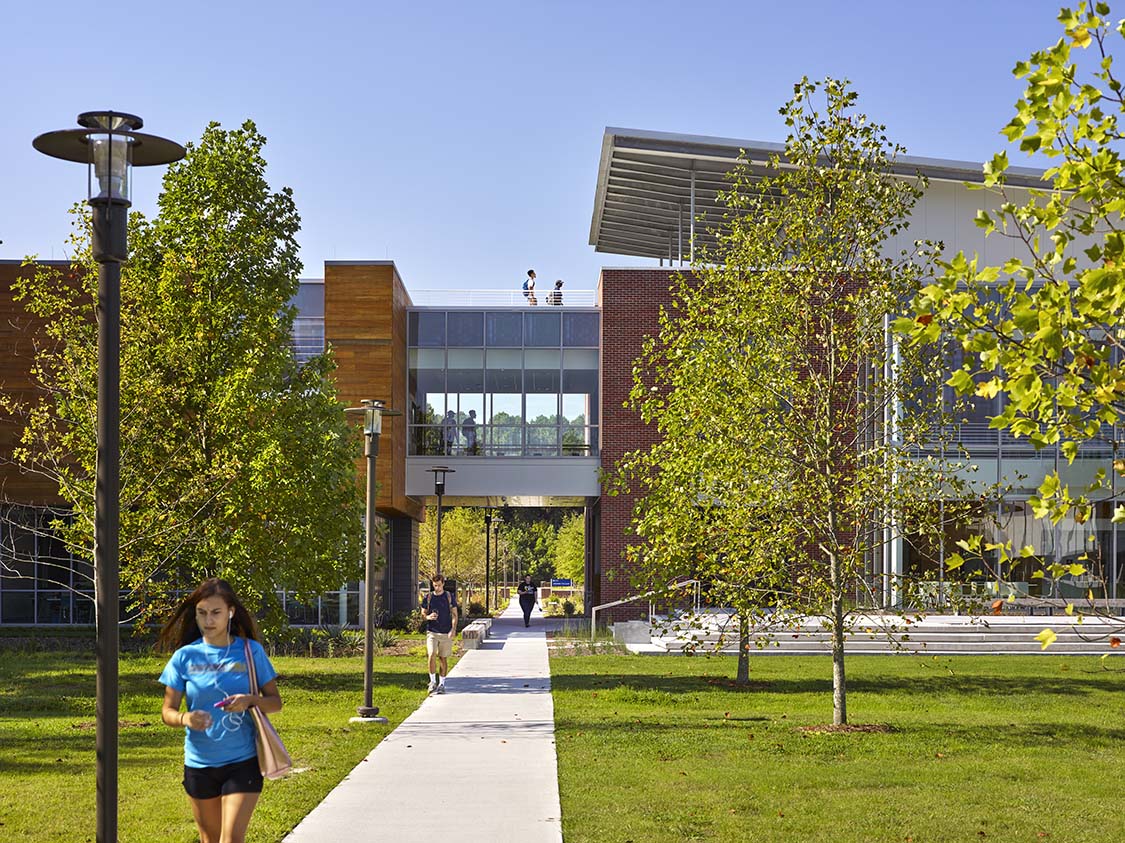
FOUR SPHERES
Connection to the environment is at the heart of the unique 44,000 square foot Greer Environmental Sciences Center, where construction was completed in 2017. The facility is organized around the Earth’s ‘four spheres’ – the atmosphere, the hydrosphere, the lithosphere, and the biosphere. “We wanted to go “all in” on the things we were passionate about,” says Dr. Schaus. “We have four labs designed around the spheres, with teaching and research space to support each one. Those labs are Ecology and Marine Biology, Earth Science, Atmospheric Science/ Oceanography, and Analytical Chemistry. In those labs, we’ve implemented all kinds of state-of-the-art technologies. For example, in the chemistry lab, we have installed filtration fume hoods, where fumes run through two carbon filters. Harmful gases get trapped on those filters rather than being pumped out into the air, and each filter lasts for about two years. Because the purified air goes back into the building, it encourages people to use less-toxic alternatives and minimize waste production. We think this reinforces the principles of green chemistry that students are taught about, while also reducing pollution and improving energy efficiency.”
Innovative design grounds the Greer Environmental Sciences Center in its surroundings. “The stormwater wetlands were designed because we have had faculty doing research on stormwater ponds,” says Dr. Schaus. “These wetlands treat about 90% of the precipitation run-off in a given year. We installed geothermal energy for heating, cooling, and hot water, which means the facility exchanges heat with the ground instead of the air, allowing the building to be about 70% more energy efficient than similarly-sized conventional laboratory facilities. One of the most unique features is the reclaimed wood, which used “sinker cypress” wood reclaimed from the bottom of the Mississippi River. In the late 1800s, when a lot of the bald cypress swamps in the Mississippi River valley were clearcut, as they were transported downriver, many logs would fall off the barges and end up submerged, where the wood was petrified and preserved. Companies have located these logs and are able to haul them out from the river bottom, so that the wood can be used without harvesting additional trees. We use this hundred-year-old wood for the siding of the classroom wing, and we expect it to last another hundred years. We also have bald cypress saplings planted around two of the stormwater ponds, completing the circle. Also, inside there’s a large mural focusing on our place in the Chesapeake Bay watershed, and lots of glass windows to allow natural light in and reduce internal lighting.”
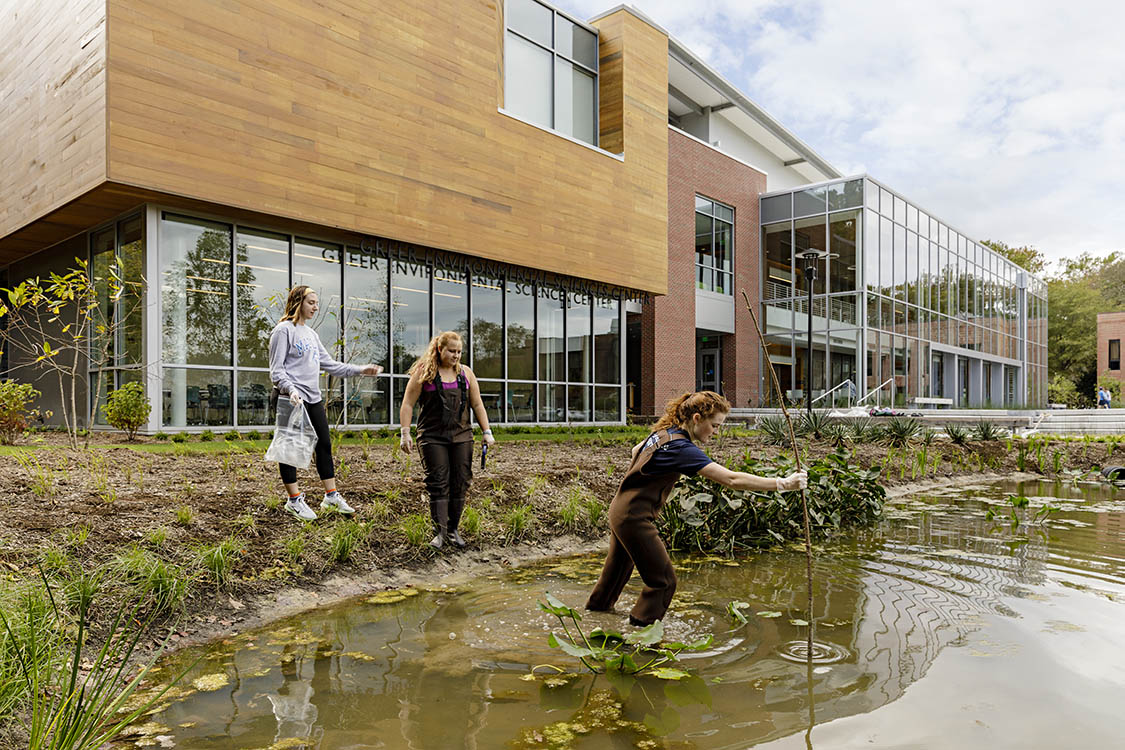
STUDENT CONNECTION
As befits a facility built for teaching and research, most of the Greer Environmental Sciences Center’s sustainable features are accessible for students to study, including the geothermal system, the wetlands, the native plants used in the landscaping, the green roof, and the solar PV system. “We knew it would cost too much to do solar PV on the whole roof, but we also think it’s important,” says Dr. Schaus. “So have a demo-scaled solar PV array, and a demo-scaled green roof. We wanted our students to be able to study these building elements. They’re able to use the building dashboard to see how much solar energy was captured in the last week,for example, and they can compare that to the atmospheric conditions.”
“In general, we wanted to link casual observers to the research here,” says Dr. Schaus. “When students walk from their dorms to the cafeteria, they go down a sidewalk which uses the building as a portal. Those students are going to go right by the wetlands, where they’ll see dragonflies, ducks, snapping turtle hatchlings. They’ll see wading birds, plants coming into flower. They’ll hear the frogs singing. We want everyone to be engaged in what this facility is doing.”
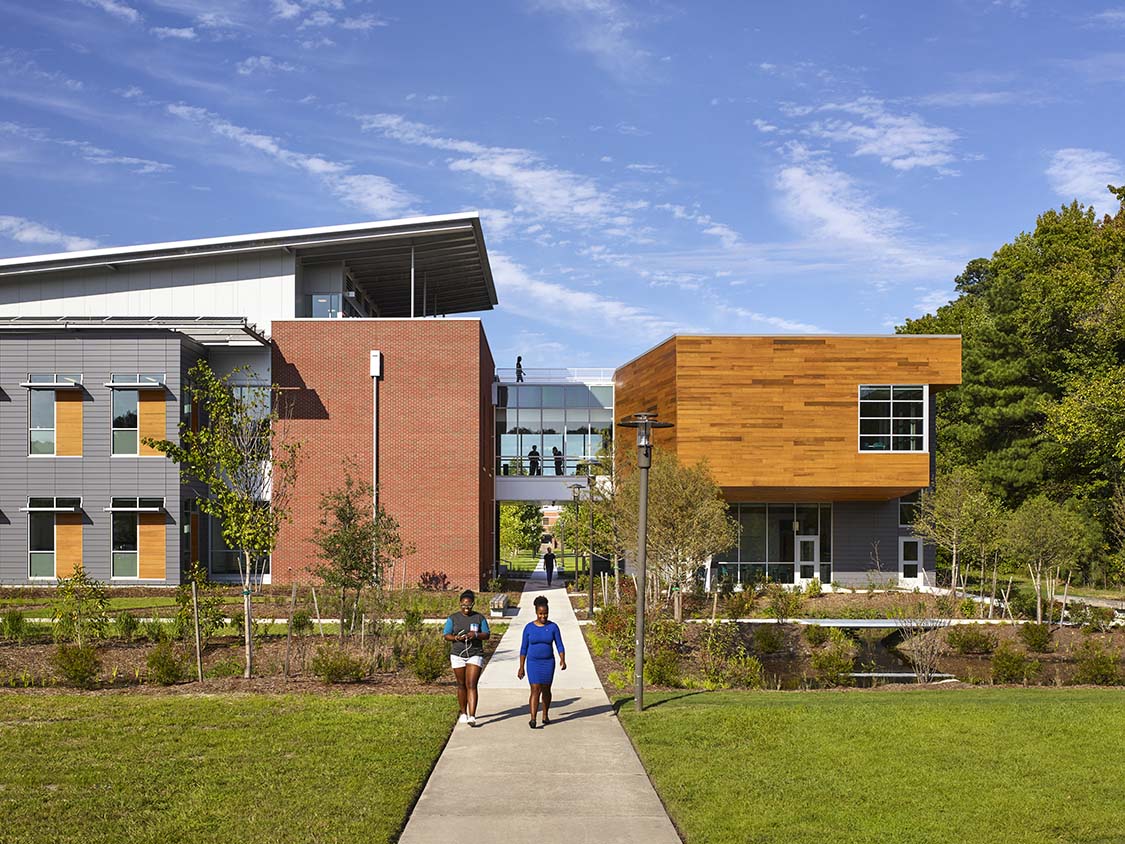
TEACHING AND RESEARCH
The facility was built to facilitate the various courses which relate to the environment in the Virginia Wesleyan curriculum. “Intro organic chemistry and intro biology will use the Blocker Hall labs,” explains Dr. Schaus. “But when you do analytical chemistry, or biogeochemistry, or upper level ecology and marine biology, they’ll be taught here. We have a geographic information system classroom. We have a big focus in our research on nutrient and metal analysis, so we have analyzers to measure trace metals. We have a clean room for samples to be processed. The undergraduates are actually using some of these high-tech pieces of equipment, which will prepare them to work in environmental consulting or the chemical industry. We now have a new advanced microscopy suite, to supplement the other microscopes in Blocker Hall, and a new greenhouse, to replace our old well-worn one.”
Research is closely tied to the capabilities of the new facility. “A chemist/environmental scientist got an Environmental Protection Agency (EPA) grant to look at how algae in the stormwater ponds take up nutrients and metals, including mercury,” says Dr. Schaus. “Her research looked at whether we could manually harvest that algae, to prevent the metals going downstream, and determined how we could process it. They came up with the idea of using worm composting, quantifying how nutrients and metals then accumulate in the worms. Students have been involved in all aspects of that project.”
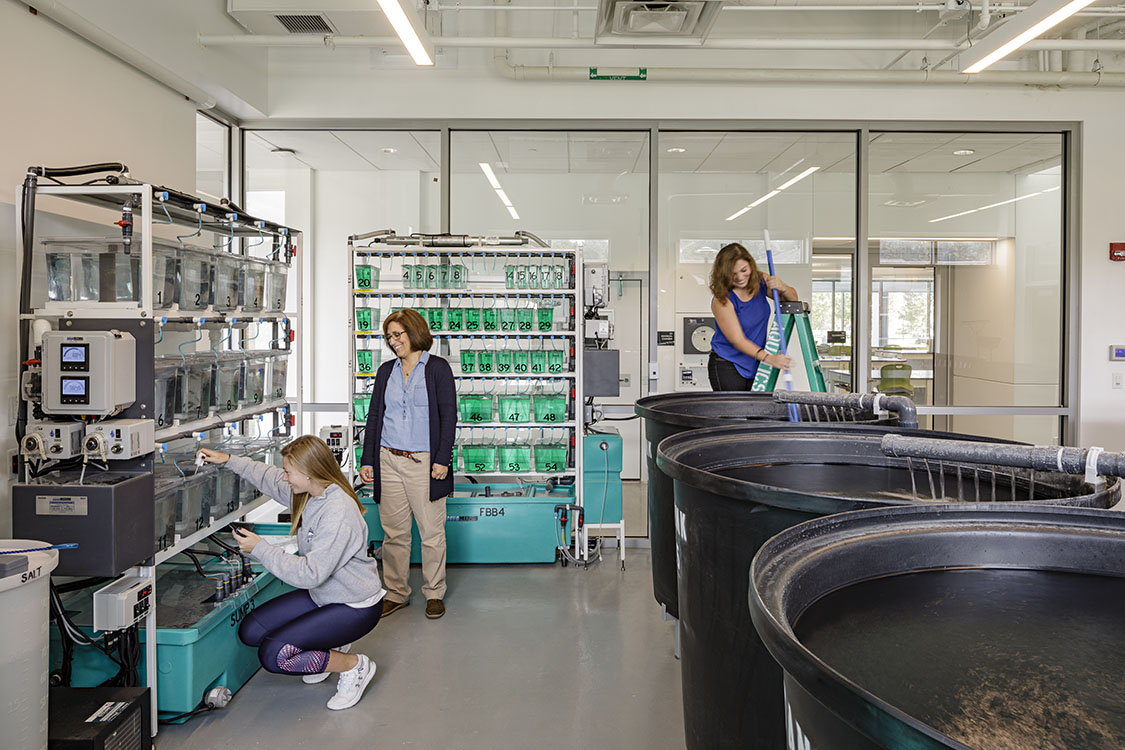
“Another project was in the aquatic research room downstairs, where a student studied the filtration rate of oysters under ocean acidification,” says Dr. Schaus. “With more CO2 emissions, the ocean is becoming more acidic, which affects things like coral reefs and oysters. Another student is doing a sting ray behavior project in that facility. Our physicist and her students even did a project on micro-meteorites. They wanted to use the slope of the roof to collect them, especially the magnetic micro-meteorites. They’ve found at least one they can identify as a meteorite. It’s all about these little things, where you design the facility, and then different faculty members adapt it and come up with something you never even thought of.”
The Greer Center has also driven the development of new teaching – some of it outside the traditional sciences. “We also have a new course called Sustainability Accounting, as part of our new Sustainability Management major, which launched in Fall 2017,” says Dr. Schaus. “That course brings together the environmental studies side and the business side. It’s about: How we can set up our businesses to make money and also do the right thing environmentally. So the major considers things such as what’s the payback time for switching to all LED lighting, and if you make a change like that, how much money are you going to save each year? It’s encouraging to me to see our business faculty embrace some of these sustainability initiatives as much as the biology faculty members have. Of course, the Greer Center is also available for other classes who want to be in a nice building, to be able to use the outdoors, and use the technology for presentations. We’re not protective of this space – we want it to be used by the entire campus.”
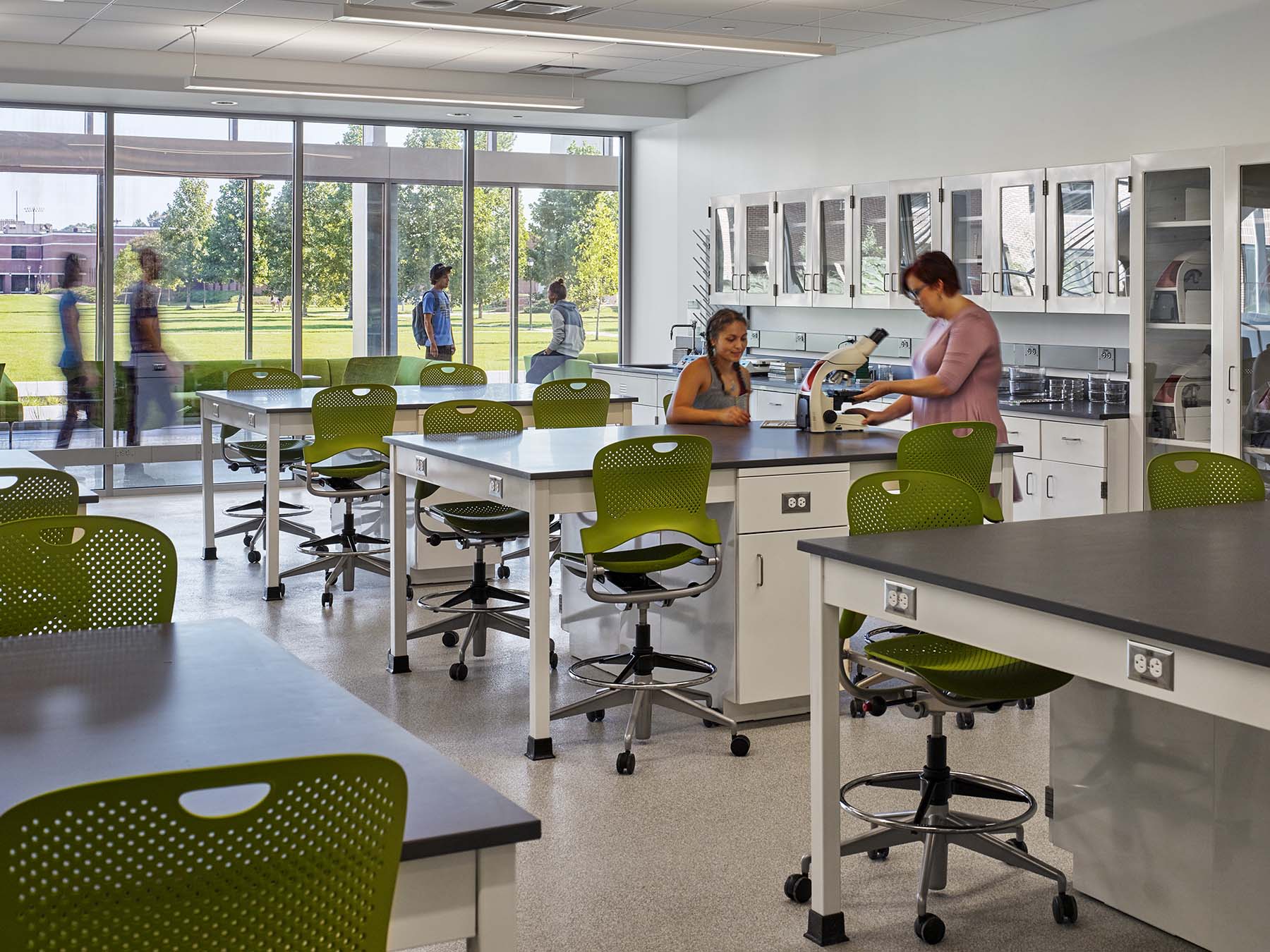
SUSTAINABLE PARTNERSHIPS
One significant byproduct of the new Greer Center is that it has helped Virginia Wesleyan develop their partnerships with other organizations. “We have had a long-standing partnership with the Virginia Aquarium, where we both own a boat together, and we use that to conduct trawls of the ocean environment or water sampling on Chesapeake Bay,” says Dr. Schaus. “But this facility has helped establish partnerships with other groups. The Sierra Club meets here monthly. We had the Virginia Master Naturalists conduct their certification courses here. We have a partnership with the Norfolk Botanical Gardens, where they send folks over to help manage the plants surrounding the Center, as well as guest lecturers for our classes, and our students can also conduct research at the Botanical Gardens.”
Nor are the Greer Center’s only partnerships with human beings. “The plantings are certified as a Monarch Way Station,” explains Dr. Schaus. “As the monarch butterflies migrate south in the Fall, many of them stop over, eat the milkweed, develop their chrysalises there, and then transform into butterflies. We actually have to put up warning signs for caterpillar crossings on the sidewalks at certain times. We also recently added a bee hotel for native pollinators, which was made by a local school.”
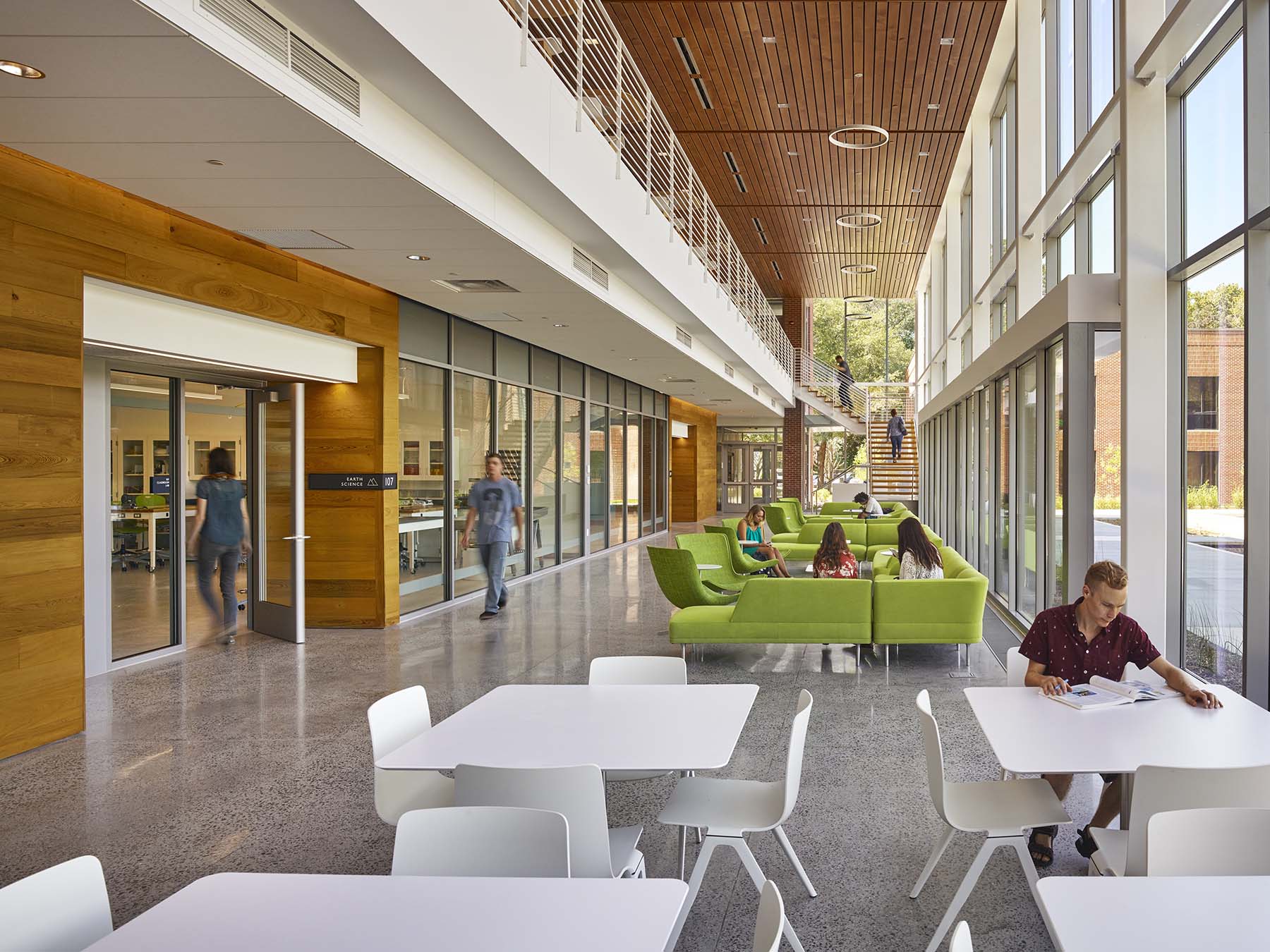
NEW OPPORTUNITIES
“The Greer Center has given us an excuse to add to it and do additional things,” says Dr. Schaus. “Originally, we just had the solar panels on the south side of the building. Since then, the college found a donor to purchase a ‘solar smart flower’. In the morning, it unfolds the solar panels in a circle, and it moves the panels so that it tracks the sun, making it 40% more efficient than conventional solar panels. We added that in the fall last year.”
Next, Virginia Wesleyan is looking for ways to further expand on- and off-campus solar generation. “We have gotten an evaluation from an outside consulting group through the Virginia Foundation of Independent Colleges, who have proposed that we could cover half our campus electrical needs by putting solar on selected rooftops and by adding solar carports,” says Dr. Schaus. “That would be an important step towards fulfilling the campus climate commitment. Our neighbour, Norfolk Academy, which is a local private high school, did that, installing $1m of solar on the roof, which should pay itself back in about eight years. We’re also exploring options of partnering with other colleges in the state to go all-in on a solar power purchase through an off-campus site. The University of Richmond did that, where they have 20MW out of a 500MW array.”
“We’re approaching the Greer Center as a way to engage our students in sustainability and environmental issues,” says Dr. Schaus. “Not all our students on campus are in one of the science majors. We want to ensure that students having a class at the Greer Center are able to think about the features of the building, and use this as a jumping-off point for spreading sustainability across the whole campus.”
Read the original story on the Sustainable Business Magazine website.
